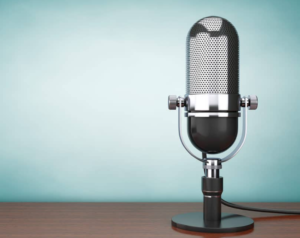
It’s no secret that microphones are everywhere. They’re in recording studios, on stages, and even the White House Press Room. Recording engineers love them because they make it easier to get professional sound quality without having to pay for a studio or hire an entire crew of audio professionals.
If you’ve ever wanted to get into podcasting, voiceovers, or any other type of recording where your voice is the main focus, then this article should be helpful in deciding which microphone is right for you. There are lots of options out there so we tried our best not only to break down what each one does but also to highlight some things that might not be obvious at first glance.
what is a microphone?
A microphone is used to record the human voice. There are two main categories of microphones that dictate how they operate: Condenser and Dynamic (also known as moving coil). A condenser microphone requires power in order to function while a dynamic mic works without it. This means if you’re planning on recording something for more than an hour, you’ll need a power source.
Most microphones produced today are condenser microphones and can be divided into three types: large diaphragms, small diaphragms, and shotguns. Large-diaphragm capacitors have a flatter frequency range and generally provide more warmth in the low end.
Small diaphragm condensers, on the other hand, provide a more focused sound because the capsules inside are smaller. Shotgun microphones are typically used to record an entire scene or stage, and can also record from a distance.
Things to consider before buying a microphone
Before buying a microphone, there are a few things you should consider. First and foremost is your budget. You can find microphones in every price range from $15 to over $10,000. We’ll be going through some of the best options in different price ranges so you can get an idea of what’s out there without going broke.
Second is your intended use. Every microphone is designed to do something specific and if you want yours to have a certain sound, then that’s what it should be used for.
How to choose the right type of microphone for your needs
One way to choose your microphone is based on whether you need power, but there are other factors to take into account as well. The first big decision you’ll have to make is whether you want a condenser or dynamic mic. Condensers require power (unless they’re battery-powered) and can be sensitive enough to pick up whispers so they’re best used in a studio environment.
Dynamic microphones don’t require power nor do they tend to pick up the sound of your breathing so if you want versatility, these are probably your best bet.
when choosing between wired or wireless microphones
Wired microphones are a tried-and-true option that has been used in the radio industry for over eighty years. If you’re looking to record something at your desk, then this is probably going to be your best option. Wireless mics transmit sound from a transmitter to a receiver that’s connected either directly or through a PA system.
Wireless mics are ideal for stage performances because they free the performer from tripping over a cable, but if you’re recording something at your desk or in a studio, then this isn’t necessary.
microphone option
Condenser microphones are best for those who want to record in a studio or other controlled environment. Dynamic mics work well outdoors and are generally more durable than condenser mics. That’s why they’re the preferred mic on stage. Ribbon mics were common in studios in the 50s and 60s, but they are returning with a vintage sound.
USB microphones plug directly into your computer and are easy to use. That’s why they’re becoming more and more popular in the podcasting community.
XLR microphones offer the most versatility when it comes to recording equipment, as they can be connected directly to a mixer or used with battery-powered capacitors. It also offers more features that allow for better recording control but requires an interface to work with a computer.
Tips for using your new mic properly
A condenser mic works best at a distance of six inches or more from your mouth. If you’re using a dynamic mic, then two to three feet is the recommended distance. Dynamic mics are typically less sensitive than condensers so it’s important to speak directly into them and not off to one side.
an o condenser mic is susceptible to picking up breath pops and plosives so it’s important to speak directly into the microphone. A windscreen or pop filter can help reduce these problems.
Conclusion
It’s no secret that microphones are everywhere. They’re in recording studios, on stages, and even the White House Press Room. Recording engineers don’t pay studio fees or hire full audio professionals. I like it because it makes it easy to get professional sound quality.
Have you ever wanted to participate in a podcast, voiceover, or another type of recording where your own voice is the main focus? This article will help you decide which microphone is right for you.
There are a lot of options out there, so I’ll tell you which one is better for each. And I’ve done my best to analyze what they’re designed to do and how much they cost. The next step is to go out and find the mic that’s right for you!